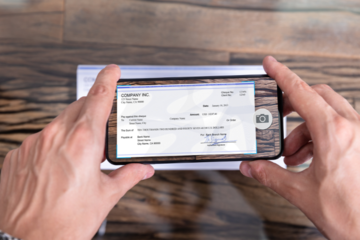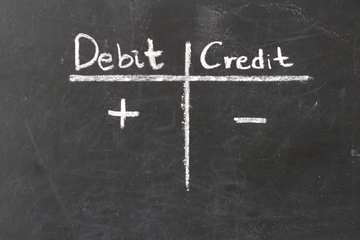Checks may be a rare sight these days, but sometimes a cashier’s check will be required for large transactions to reassure that the check won’t bounce due to a lack of funds.
If you're not familiar with a cashier’s check, when one is used, or how to get one, don’t fear. We’re here to give you all of the details for when you might need to use a cashier's check.
What Is a Cashiers Check?
When you get a cashier’s check from your bank, the bank will immediately debit the funds from your account to cover the amount for which it is issuing the check. Some banks might charge a small service fee to issue a cashier’s check.
A cashier's check is a secure form of payment issued by a bank or financial institution, guaranteeing the funds as it is drawn directly from the bank's account rather than the payer's personal account, making it a reliable payment method for large transactions.
In other words, a cashier’s check is essentially a promise from the issuing bank to pay from the bank’s own funds. This gives the person or business depositing the check a much higher level of certainty that the check will be covered.
A printed cashier’s check will include watermarks and bank information related to the issuing bank, which helps prove that it is not counterfeit.
When Should You Use a Cashier’s Check?
A cashier’s check is used when making large purchases where the person receiving the funds wants to be reassured that the funds are available and the check won’t bounce. This certainly isn’t a check you’d get to pay for a grocery purchase.
Should you find yourself at the bank getting a cashier’s check, more than likely, you’re using it to pay for:
If you are selling someone a valuable item through the internet, most likely, you, too, will want a cashier’s check in hand before you turn over that extensive rare comic book collection.
For most people, a cashier’s check is almost equivalent to cash, which means it is worth a premium to recipients that are security minded.
How To Get a Cashier’s Check
A cashier’s check is issued by any bank or credit union when it is prepaid by the customer. More often than not, you’d want to use your own bank to get a cashier’s check, as banks often charge a service fee and might charge less to produce a cashier’s check or do it for free when you are a customer.
Also, if you currently have a funded account, the bank can pull directly from your account to ensure the funds are secured before issuing the cashier’s check. To get your cashier's check, be prepared to produce your government-issued ID, the payee’s name, and the amount of the check. On the check will be printed the bank’s information and the recipient's name and amount.
Know the exact amount of the check needed. There isn’t a chance to round up or down once it’s printed.
If your account has sufficient funds, the bank will pull those funds, print the check, and issue it to you. If you cannot go to the bank in person, many banks will mail you the check so long as you have a US-based mailing address. You cannot print the check at home due to the security protocols used by the bank when printing to their official stationery. Factor in the appropriate fees. Banks will usually charge you a service fee, and that amount will also be deducted from your account.
As a reminder, most banks will only produce a cashier’s check for their account holders, and fees could vary based on the amount of business you have with the bank. For the greatest success, always first approach your current bank when a cashier’s check is needed. Once you have your cashier’s check, get a receipt for the check. This is proof of payment to the bank and may be used to know if the check has been cashed or brought back to the bank should you lose the check.
Pros and Cons of a Cashier’s Check
Cashier’s checks come with quite a few pros and a few cons. While they most benefit the recipient, there are benefits for the check writer as well. A list of those pros and cons include:
Sellers Know They Are Getting Paid
Since the funds for the cashier’s check are drawn against the bank’s general account, sellers are reassured that the check will be honored, and they needn’t be worried it will be returned for insufficient funds.
Faster Funds Availability
When a bank deposits a check, it might hold the funds if it is from a personal account, not with that same bank. If the funds are identified to come from another bank, the funds could be released far faster, if not immediately.
Both Buyer and Seller are Secure
It’s obvious that the seller is more secure when receiving a cashier’s check, but the buyer is more secure as well. The cashier’s check doesn’t expose any of the buyer’s account information that could potentially be exploited later on.
They are not Foolproof
While far more secure than other forms of checks, there is still a chance that sophisticated criminals could make convincing replicas that might only be revealed when they are attempted to be deposited at the bank.
A Fee Is Typical
The majority of banks will charge a service fee for a cashier’s check, only offering them for free to high-net-worth depositors. Expect a fee of $5 to $15.
Plan on Visiting Your Branch
It’s easy to write a personal check if you have them available, but the assurances that come with a cashier’s check usually mean you’ve had to visit a bank branch to get the check. Cashier’s checks typically include watermarks or holograms that require they are printed on official bank stationery. If you want to make a large purchase on Sunday, but your bank is closed, getting a cashier’s check will probably not happen.



